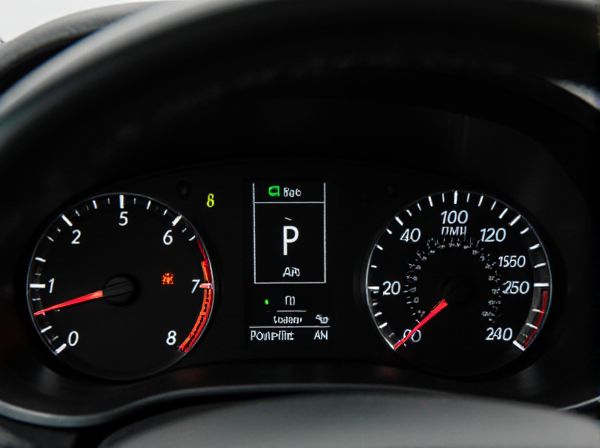
Photo illustration: Check Engine Light vs Service Light
The Check Engine Light indicates a potential problem with your vehicle's engine, emission system, or gas cap and requires immediate attention to prevent further damage. The Service Light signals scheduled maintenance or routine service needs, such as an oil change or tire rotation, to keep your car running smoothly. Understanding these warning lights helps you prioritize urgent repairs while maintaining regular upkeep for your vehicle.
Table of Comparison
| Feature | Check Engine Light | Service Light |
|---|---|---|
| Meaning | Indicates engine or emissions system issues | Indicates scheduled maintenance or minor issues |
| Common Causes | Faulty sensors, fuel system problems, ignition issues | Oil change reminder, filter replacement, routine checks |
| Urgency | High - requires immediate diagnosis and repair | Low - can be addressed during next service |
| Indicator Light Color | Yellow or orange | Usually yellow or green |
| Impact on Vehicle Performance | May cause reduced power or stalling | No immediate impact on performance |
| Action Required | Scan with OBD-II scanner, repair faults | Schedule routine maintenance |
| Body Systems Monitored | Engine, exhaust, emissions systems | General maintenance components |
Understanding the Check Engine Light
The Check Engine Light indicates a malfunction detected by the vehicle's On-Board Diagnostics (OBD) system, signaling issues related to engine performance, emissions, or fuel efficiency. It commonly activates due to misfires, oxygen sensor failures, or catalytic converter problems, requiring prompt diagnostics to prevent engine damage. Understanding this light helps drivers address potential mechanical faults early, avoiding costly repairs and ensuring vehicle safety and compliance with emissions standards.
What the Service Light Really Means
The Service Light in a vehicle primarily signals routine maintenance requirements such as oil changes, filter replacements, or scheduled inspections, reflecting the manufacturer's maintenance timeline. This light is designed to remind drivers to perform preventative care to ensure optimal engine performance and longevity. Unlike the Check Engine Light, which indicates potential mechanical or emissions system issues needing immediate attention, the Service Light highlights upcoming or due maintenance tasks that help prevent unexpected breakdowns.
Key Differences Between Check Engine and Service Lights
The Check Engine Light signals issues related to the engine or emissions system, often triggered by diagnostic trouble codes indicating malfunctions detected by the onboard computer. In contrast, the Service Light typically serves as a maintenance reminder, alerting the driver to routine service needs such as oil changes, tire rotations, or scheduled inspections. Understanding these key differences helps prioritize immediate mechanical repairs versus preventive maintenance to maintain vehicle performance and safety.
Common Causes for the Check Engine Light
The Check Engine Light often illuminates due to common causes such as a faulty oxygen sensor, loose or damaged gas cap, or malfunctioning catalytic converter. Other frequent triggers include issues with spark plugs, ignition coils, or the mass airflow sensor, which directly impact engine performance and emissions. Diagnosing these components promptly can prevent further engine damage and maintain vehicle efficiency.
Typical Reasons for the Service Light Activation
The Service Light typically activates due to scheduled maintenance needs such as oil changes, filter replacements, or tire rotation intervals. This light may also indicate minor issues like low windshield washer fluid or a reminder to inspect critical systems for wear and tear. Unlike the Check Engine Light, which signals engine or emission system problems, the Service Light primarily serves as a maintenance alert to optimize vehicle performance and longevity.
Immediate Actions When the Check Engine Light Appears
When the Check Engine Light illuminates, immediately inspect for serious issues like engine misfires, overheating, or fluid leaks, as these require prompt attention to prevent severe damage. Using an OBD-II scanner provides diagnostic trouble codes (DTCs) that help identify the exact problem for targeted repairs. Avoid prolonged driving with the Check Engine Light on to reduce the risk of costly engine repairs and ensure vehicle safety and performance.
How to Respond to the Service Light
The Service Light indicates routine maintenance needs such as oil changes or filter replacements and should prompt scheduling a service appointment promptly to prevent potential issues. Ignoring the Service Light can lead to reduced vehicle performance or costly repairs, so using a diagnostic tool or visiting a mechanic helps ensure timely maintenance. Responding quickly maintains engine health, prolongs the vehicle's lifespan, and upholds manufacturer warranty requirements.
Diagnostic Tools for Check Engine Light Issues
Diagnostic tools for Check Engine Light issues include OBD-II scanners, which read error codes stored by the vehicle's onboard computer to identify specific engine or emission problems. Advanced diagnostic devices offer real-time data monitoring and can reset the Check Engine Light after repairs, ensuring accurate troubleshooting. Unlike the Service Light, which signals scheduled maintenance needs, the Check Engine Light diagnostics require precise code interpretation to address engine malfunctions effectively.
Preventive Maintenance to Avoid Warning Lights
Regular preventive maintenance, such as timely oil changes, fluid checks, and air filter replacements, plays a crucial role in avoiding Check Engine Light and Service Light warnings. Inspecting spark plugs, oxygen sensors, and emissions systems helps detect issues early, preventing costly repairs and ensuring engine efficiency. Consistent upkeep according to manufacturer guidelines reduces the risk of dashboard alerts and extends vehicle longevity.
Frequently Asked Questions About Dashboard Warning Lights
The Check Engine Light indicates issues related to the vehicle's engine, emissions system, or transmission, while the Service Light typically signals routine maintenance requirements such as oil changes or tire rotations. Vehicle owners often ask why the Check Engine Light is flashing, which usually means a severe engine problem requiring immediate attention to prevent damage. Common questions also include how to differentiate between dashboard warning lights and when to seek professional diagnostics for accurate troubleshooting.
 caratoz.com
caratoz.com